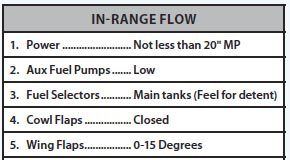Some time ago, you studied the FAA’s charts and learned all of the symbology and the various altitude restrictions like MEA, MOCA, MCA, and probably MRA and others. But, if you’re like most of us, you’ve forgotten a lot of that. But, these altitudes are important. After all, if you go lower, you might hit something. Perhaps a review is in order.
How many en-route minimum altitude types are there? If you said anything other than a dozen, better read on.
The Big Picture
Part 95 covers altitudes governing IFR operation on Federal airways, jet routes, RNAV routes, and other direct routes with an MEA. Further, 91.177 says that no one may operate an IFR aircraft below the applicable minimum altitudes in Part 95. MEAs, MOCAs, MRAs, and MCAs on en route charts are altitudes stated in Part 95.
The FAA sets altitudes once they determine that the navaids are adequate, provide acceptable signal coverage, and that aircraft can remain within proper route widths. Every Victor airway’s usable altitude envelope extends from the base at the MEA or MOCA to the top at 17,999 feet.
Now let’s go over those 12 altitudes.
MEA
The Minimum En route Altitude is the lowest published altitude between fixes that assures adequate navigational signal coverage and meets obstacle clearance requirements between those fixes. MEAs apply to the entire route width.
MEAs for routes wholly within controlled airspace typically provide a buffer above the floor of controlled airspace consisting of at least 300 feet in transition areas and 500 feet in control areas. MEAs are established based on obstacle clearance, adequate navigation facility performance, and communications requirements. RNAV MEAs are usually lower than VOR altitudes.
MEAs have their quirks. They can be different in opposite directions due to minimum climb gradients going one way or the other. There can also be minimum descent values. If only one altitude is published, it is both MEA and MOCA. MEAs are used only by the U.S., Canada, and a few other countries.
An MEA gap is a route segment with a gap in navigational signal coverage. It is not the same as an unusable route segment depicted with zigzag symbol over its length to say it’s no longer IFR-usable.
MRA
The Minimum Reception Altitude is the lowest altitude at which reliable VOR signals can be received. If the MRA at a VOR fix is higher than the MEA, then an MRA is published. An MRA becomes important when a fix is defined by radials from different VORs.
MAA
Maximum Authorized Altitudes exist because VHF signals travel line of sight. You could be high enough to receive signals from two or more VORs. Or, MAAs could keep you out of airspace above.
MOCA
The Minimum Obstruction Clearance Altitude is the lowest published altitude between radio fixes on VOR airways, off-airway routes, or route segments that meets terrain, building, and tower obstacle clearance requirements for the whole route segment. A MOCA ensures acceptable navigational signal coverage only within 22 NM of a VOR. For example, a pilot cleared for an approach can descend from the MEA to the MOCA once within 22 NM of the VOR. Within 22 NM, no practical difference exists between a MOCA and an MEA.
Outside 22 miles, communications remain assured, but there may be no radar coverage, and the MOCA is likely below any Minimum Reception Altitude. MOCA is typically used only in emergencies, often to get below icing.
IFR GPS aircraft can be cleared below the MEA down to the MOCA if there is one. Absent a MOCA, ATC can assign altitudes at or above the MVA or MIA along the route of flight and must issue lost communication instructions. If a pilot loses radio communication or GPS navigation, they are expected to climb to the MEA for the route segment being flown. This rule applies to all applicable airways, not just those with GPS RNAV MEAs and regardless of radar coverage.
MTA
Due to higher airspeeds at 10,000 feet MSL and above with their greater turn radii, the MEA might offer inadequate obstacle clearance during a route turn. Should the MEA prove insufficient, especially in mountainous terrain, a higher Minimum Turning Altitude is needed.
MTAs are denoted on U.S. Government charts by a minimum crossing altitude (MCA) icon (“x” flag) and a note describing the restriction on the chart.
An MTA restriction typically consists of the route leading to the turn point, the route leading from the point, and the required altitude: V465 NE TO V330 W 16000.
Pilots must ensure they are at or above the charted MTA not later than the turn point and maintain at or above MTA until joining the centerline of the following route. Once established on the centerline after the turning fix, the MEA/MOCA again determines the minimum altitude available.
An MTA may exclude the use of a specific altitude or range of altitudes during a turn. For example, the MTA may restrict the use of 10,000 through 11,000 feet MSL. Altitudes above 11,000 feet MSL or below 10,000 feet MSL would be unrestricted.
MCA
The Minimum Crossing Altitude is the lowest altitude at which an airplane must cross a flag-designated fix when heading toward a higher MEA.
MHA
The Minimum Holding Altitude is the lowest altitude permitted for a holding pattern that assures navigational signal coverage, communications, and meets obstacle clearance requirements. Pilots should know the MHA when entering a hold to meet these safety requirements. The en-route chart permits speeds up to 175 knots at all altitudes and 210 knots between 6000 and 14,000 MSL inclusive.
MIA
The Minimum Instrument Altitude is the lowest IFR altitude established for use in a specific airspace. The MIA could be a MOCA, MEA, MSA, MVA, a transition altitude, or a missed approach altitude. The MIA provides obstacle clearance and may or may not be in controlled airspace. If no MIA is available, apply 91.177(a)(2): In mountainous areas fly 2000 feet above the highest obstacle within 4 NM from the course to be flown. Otherwise, make that 1000 feet.
MIAs are not published, but you can ask the center.
MORA
Minimum Off Route Altitudes were developed by Jeppesen. Their paper charts depict Grid MORAs that clear all terrain and obstructions by 1000 feet in areas where the highest elevations are 5000 feet MSL or lower within typical grid blocks of one-degree latitude by one-degree longitude lines. The official OROCA (Minimum Off Route Obstruction Clearance Altitude) on U.S. Government IFR en-route charts serve the same purpose, except clearances are 1000 feet in non-mountainous areas and 2000 feet in designated mountainous areas. Ergo, Grid MORAs and OROCAs show the same altitudes. Oxygen might be required.
Sometimes the FAA substitutes as low as 1600 feet for 2000 feet in mountainous terrain when there are excellent local altimeter sources and where local terrain is not very steep.
Jeppesen and ICAO define mountainous terrain as terrain that rises at least 3000 feet within a 10 NM distance. The AIM uses a map in Section 5-6-16 (a version of which is shown on Page 6 of this issue).
OROCA
An Off-Route Obstruction Clearance Altitude provides large-scale obstruction clearance with a 2000-foot buffer in mountainous terrain and 1000 feet elsewhere. OROCAs might not provide signal coverage from ground-based NAVAIDs, ATC radar, or communications.
OROCAs are for emergencies and situational awareness. Consider checking them when you’re flying direct.
But, OROCAs do not provide acceptable clearance for terrain and obstructions for off-route, random RNAV flights in controlled or uncontrolled airspace. They don’t undergo vigorous evaluations or flight inspection as do MEAs, MVAs, and MOCAs and therefore do not meet 91.177. So, if you’re using an OROCA, you should consider adding a buffer.
OROCAs exist only in the U.S. ICAO has no requirement to show OROCAs or MORAs. NOTAMs are not issued for OROCAs that change between chart revisions.
MSA
MSA refers to both the Minimum Safe Altitude Warning (MSAW) function in ATC software and to approach charts. MSAW alerts a controller when a tracked aircraft is below or predicted to go below a safe altitude.
MSA altitudes on approach charts provide at least 1000 feet of obstacle clearance within a 25 or 30 NM radius around a navigation facility, waypoint, or airport reference point in up to four sectors. MSAs are for emergencies only and do not necessarily assure acceptable navigational signal coverage. The ICAO Minimum Sector Altitude is the same.
MVA
The Minimum Vectoring Altitude is the lowest MSL altitude at which an IFR aircraft will be vectored by a radar controller except as otherwise approved for radar approaches, departures, and missed approaches. The MVA meets IFR obstacle clearance criteria. It can be lower than the published MEA along an airway. MVA requires an adequate radar return from the aircraft. They can be lower than the minimum altitudes otherwise published on charts. MVA charts are published but not very useful.
Something to Think About
All these altitudes are vital if you lose communications. We’re required by 91.185 to fly the highest of the altitude ATC assigned or told us to expect, or the MEA. If the MOCA, MCA, or MRA is higher than expected or assigned, you must climb to the highest of them.
When departing VFR intending to obtain an IFR clearance, you must know nearby terrain and obstructions. If accepting a clearance below the MEA, MIA, MVA, or the OROCA, you are responsible for terrain/obstruction clearance until reaching the MEA, MIA, or MVA. Sound familiar?




This article has several omissions which make it very confusing to read. For instance the MRA should read the lowest reception altitude for *off course* VOR reception, to clarify why you would need a separate MRA versus MEA.